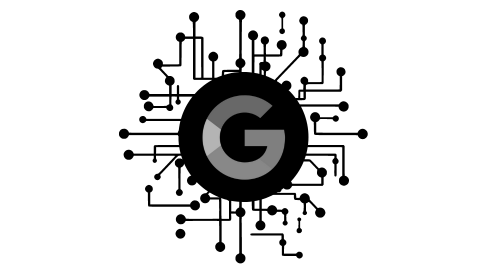One of the most important jobs of being a business owner is constantly keeping an eye towards the future. Anticipating shifts in marketing trends is the best way to position your business in the lead. Over the past century, our world has seen advancements in technology which lets us accomplish tasks previously believed impossible. In the past couple of decades alone, we seem to have leaped forward in technological prowess. Tech advancements make some aspects of life easier, but also brings increased complexity, making predicting future trends even more difficult.
The year 2020 has long been propped up in works of science fiction as the year in which the ‘future’ will have finally arrived. While it may be hard to believe, 2020 is just around the corner. So, what’s the status on this future we’ve been promised for so long? Which marketing trends can we expect next year?
The Future of Marketing Trends is Already Here
While we may not see flying cars outside our windows quite yet, you could argue that we are already experiencing this elusive ‘future’. Thanks to internet and mobile phone technology, every corner of the planet is connected to a global community centered around the sharing of knowledge (and the occasional kitten playing a piano gif).
As we know from observing the past, not all technologies (RIP Betamax) and products (wait, people still use pagers?) stand the test of time. When new marketing trends show up, it’s sometimes difficult to decide whether they’ll stand the test of time, or end up a waste of resources. However, these 7 marketing trends have been around and are most likely to stick around as marketing mainstays into the future. If you haven’t added any of them into your marketing mix yet… what are you waiting for?
Marketing Trend #1: AR and VR
Technologies like augmented reality (AR) and virtual reality (VR) aren’t exactly new. There have been attempts to make them a reality (see what we did there?) in the past. Due to various complications, previous efforts to bring AR and VR to the mass market stage failed. Recent advancements in display technology, software capabilities, and battery life make today’s attempts far more likely to succeed.
As with most new bits of tech, assessing their relevance to your business can be difficult. VR and AR are often spoken of in the same breath due to their similarities. Despite this fact, the two technologies are quite different. Most experts seem to agree that VR is primarily a niche technology with limited applications. Quality VR experiences can be prohibitively expensive to develop and are generally considered to be more suited towards video games and instructional simulations.
AR, on the other hand, provides obvious benefits for marketing teams working to sell physical products or merchandising solutions. Modern AR applications allow customers to get more familiar with products through methods such as showing them how that new couch would fit in their living room or providing clients with life-size simulations of how product placements would look in the store. This technology is so new that we’re still only skimming the surface of its marketing potential, but it already looks promising.
VR/AR approaches might not be ideal for every business, but these technologies have captured a large audience and are likely to become massive players in the coming years. Reality-modifying tech is a marketing trend worth paying attention to as we move into 2020.
Marketing Trend #2: Voice Searches
No matter your walk of life, you’ve undoubtedly heard someone talking to their voice-assistant Alexa or Siri by now. The adoption of “smart speakers” continues to rise with an install base of over 26% of the US homes as of January 2019. In addition to these voice-controlled devices, many customers use their mobile phone’s voice search function on a regular basis. In fact, Google reports that 20% of all Google searches are now conducted using voice search.
The rise of voice search impacts the digital marketing world primarily due to its effect on search engine optimization (SEO). The wording and structure of search terms differ between typed searches and spoken ones. People are much more likely to say something like “how to cook pot roast” as opposed to typing a shorter search phrase like “pot roast recipe.” This means keywords that performed well previously may need to be modified for the shifts in search habits brought on by the prevalence of voice searches.
Another interesting byproduct of voice searches that is making a big splash on Amazon’s smart speaker devices is what is called Alexa Skills. Alexa Skills are basically apps designed specifically for Amazon’s voice-controlled smart speakers. These voice-enabled applications vary in execution from interactive games to step by step instructions on how to clean different types of stains.
Companies are already taking advantage of this new platform to provide value to their customers and position themselves ahead of the competition. This marketing trend appears to be revving up and is worth some serious consideration as we head towards 2020.
Marketing Trend #3: Social Media
Long gone are the days when sane-sounding people thought social media was a passing fad. Like it or not, social media is here to stay. As with most things in life, the best way to respond to new challenges is by taking them head-on. Ignoring the marketing opportunities offered by social media is tantamount to leaving money on the table.
Entertaining and informative marketing videos have proven especially effective. YouTube is a powerful tool that should not be left forgotten in the shed. YouTube is a platform unto itself, but one of its greatest assets is the ability to leverage your YouTube videos across other platforms by embedding them on websites and sharing them across social feeds.
Video marketing helps to engage the modern audience whose attention is prone to wandering. Short, punchy videos can help you explain what your business or product does in an easily digestible and entertaining format that will help you reach new customers across multiple platforms. Videos can be fairly inexpensive depending on your approach, but they instantly elevate your brand in the customer’s mind when done well.
Each social media platform requires a slightly different approach, due to the preferences of users on those platforms and the particular demographics of each platform. You can easily spread a single message across multiple channels by modifying the same message for different target audiences. Monitoring your social media presence and timing announcements across various platforms can take a bit of careful planning and attention to detail, but your efforts will be rewarded handsomely. If you haven’t started to establish your brand’s presence on social media, now is the time to start.
Marketing Trend #4: Interactive Content
Interactivity is a key component for driving customer engagement with your platforms and advertisements. Clever use of questionnaires and choice-driven content can serve the dual purpose of keeping visitors on your site longer while also providing valuable insights into their habits and preferences. Quizzes and polls are tried and true methods for increasing engagement, but there is a lot of room for thinking outside the box and creating some truly unique content.
Interactive elements can take many different shapes such as the aforementioned AR or voice applications. Chatbots have more recently established a presence on many companies’ sites as a meaningful tool for driving customer engagement. Chatbots are an elegant evolution of stale FAQ (Frequently Asked Questions) posts. Generating answers to commonly asked questions and presenting them through interactive chatbots drives engagement and encourages customers to engage with your brand.
Interactive content that is equal parts fun and useful is much more likely to get organically shared by visitors. Adding interactive components to your email campaigns can spice up your marketing and get people excited about seeing your brand in their inbox. Embracing the trends of interactive marketing will serve you well in the years ahead.
Marketing Trend #5: Honesty and Transparency
Every company likes to think they come across as honest, but more and more marketing teams are steadily working to actively market their company’s trust factor. This marketing trend is more of a culture shift that’s a reaction to a variety of circumstances. The general public has grown wary of governments and businesses alike. Modern people are much less likely to blindly trust organizations thanks to events such as the housing bubble, the Equifax fiasco, and the big bank bailouts (to name a few). The ripple effect is that transparency, honesty, and sincerity have become incredibly valuable characteristics for businesses to exhibit.
One of the best ways of establishing trust with your customers is through transparency. Being open and honest at all times (not just when things are going well) will engender a bond strengthened by trust. This means being upfront about how customer data is tracked, stored, and utilized. Businesses have found massive success in the face of failure by getting out in front of the story and being honest with their customers. Don’t believe me? Check it out yourself with some examples Forbes gathered recently.
Your brand is your most valuable asset, but it won’t take care of itself. Establishing and maintaining a powerful and trustworthy brand doesn’t happen by accident. By embracing the power of honesty, you can drastically increase the success of your marketing efforts and earn the loyalty of current and future clients alike. Don’t wait until 2020 to start flexing your truth muscles.
Marketing Trend #6: Personalization
Ads are pushed in front of modern customers with high frequency in the modern world. Sometimes this can lead to customer frustration and fatigue. Companies like Google and Amazon have been taking advantage of advanced data collection techniques and advertising algorithms to create more personalized marketing efforts that focus on customer preferences and past behaviors.
Consumers have little patience for advertisements that aren’t relevant to their interests. Tracking visitors to your sites and their habits can help you identify their interests and focus advertising efforts on products that will appeal directly to them. Personalized ads and content are significantly more likely to lead to sales and prevent potential customers from becoming frustrated with your efforts.
In recent years Gartner predicted that 90% of brands will take advantage of more personalized marketing tactics by 2020. This marketing trend comes with the caveat that the primary bottleneck which will prevent the success of marketing personalization is content.
Marketing Trend #7: Content Will Always Be King
Even as marketing trends change, content remains the driving force behind successful marketing. The key to creating impactful content is focusing on driving value to your audience. Entertaining customers with purposeful content that doesn’t waste their time drastically improves all your marketing efforts. Regardless of the platform or medium, content is the most important piece of the puzzle.
Establishing yourself as an expert in your field cements your place in the customer’s mind as a company that can be relied upon. Demonstrating your knowledge and expertise through thought-provoking content and value-driven posts can drastically increase conversion rates and return on advertising spend.
Blogs remain a fantastic method for driving traffic to your sites. Blog posts can be incorporated into social media posts or used as outlines for other types of content such as video marketing. Creativity and execution work hand in hand to create interesting and informative marketing materials. Bite-sized nuggets of information can be quickly consumed, readily shared, and leave the customer eager for more. Marketing campaigns rely on content as the lynchpin to their success. No matter what year it is, content will always remain relevant.
Future-Proofing from Marketing Trends With SharpSpring
Automation is a powerful tool that can help businesses keep up with the rapidly changing nature of modern marketing. Combining automation with interactive content and personalized marketing is a recipe for success. And as marketing trends come and go, the ability to test, report, and pivot quickly via SharpSpring’s powerful automation and reporting engine is a valuable strategy every business owner should have in their arsenal.
Originally published on the SharpSpring blog








